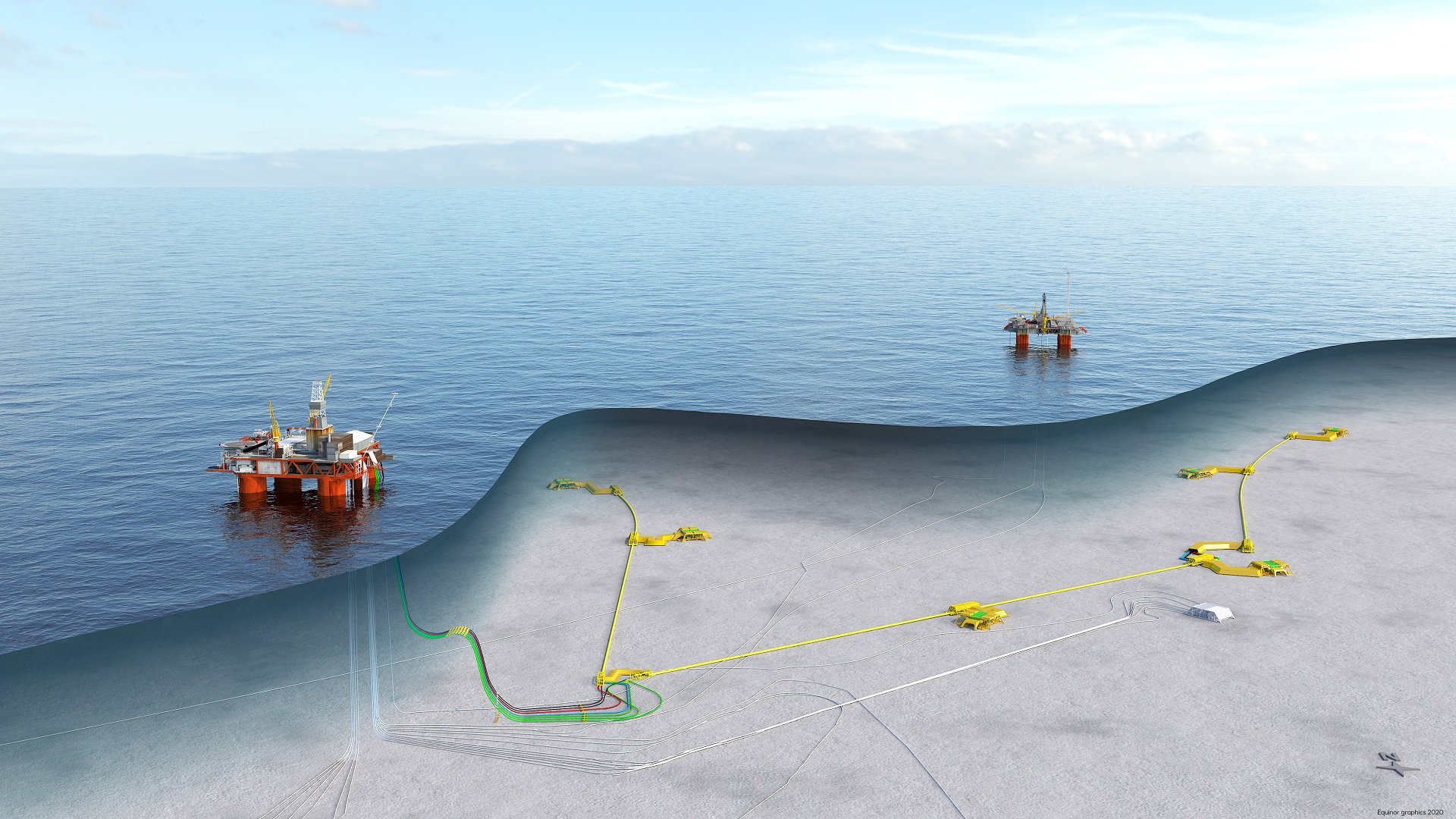Is the glass half-empty or half-full?

Thanks to various measures, recoverable resources on Snorre have almost tripled compared with the original development plan (PDO). Illustration: Equinor
6/17/2022 There's no reason to sit back and rest on our laurels when an old field reaches tail production.
As one of the largest-ever improved oil recovery projects, Snorre in the North Sea should establish a precedent.
The history of the Snorre field includes a lot of back and forth on upside opportunities, operator changes, technology and multiple development plans.
The amended plan for development and operation (PDO) was approved by the Norwegian authorities in 2018. The Snorre expansion project included six seabed templates, each with four new wells tied back to the Snorre A platform. Production started in 2020.
At that point, a dizzying NOK 105 billion had been invested in Snorre. Future investments (from 2020) will reach into the tens of billions. Vast amounts, but these investments will bear fruit.
The Norwegian Petroleum Directorate's 50th anniversary
All fields on the Norwegian continental shelf have their unique characteristics.
Many sleepless nights and plenty of hard work from a broad range of players have gone into developing Norwegian oil and gas fields into what they are today, with high regularity in production – and extended lifetimes for many fields.
Over the last 50 years, the Norwegian Petroleum Directorate has played an important role – or supporting role – in the development of many fields – as well as in the management of data from the shelf. In this series of articles, we'll be telling a few of these stories.
Tripled
Recoverable reserves in the Snorre field have increased from 118 million standard cubic metres (Sm3) of oil equivalent (740 million barrels) to 320 million Sm3 (2000 million barrels).
Multiple efforts to enhance oil recovery over several years make Snorre perhaps the largest improved oil recovery project on the Norwegian shelf. Clear goals, a long-term mindset, and cooperation between licensees and the authorities, have yielded good results on Snorre.
The Snorre expansion project alone helps increase recovery from the Snorre field by about 31 million standard cubic metres of oil (200 million barrels). The recovery rate on the field rose from 46 per cent to 51 per cent.
historical overview
A quick historical overview: The field was proven in 1979. The first PDO was approved in 1988 and production started in August 1992. The field was developed with a tension leg platform (the first in Norway) and the Norwegian company Saga Petroleum was the operator, with technical support from Exxon. Snorre spent a brief period in Hydro's hands before Statoil (now Equinor) took over. The original PDO estimated Snorre's lifetime at 2011-2014.
Read more about the development solution and other facts here.
Strategies to further develop Snorre have been considered since as far back as 2005. In 2015, the players had reached a crossroads. Snorre contained a lot of oil that Equinor and its partners couldn't reach with the existing development solution. The platforms on the field were facing an upgrade to extend their lifetime. The production licence was about to expire. Should they take the chance, or not?
additional efforts
The authorities, led by the Norwegian Petroleum Directorate (NPD), defined Snorre as a prioritised project. The Directorate was well-acquainted with the geology and the reservoirs. Operator Equinor and its partners were met with weighty, expert arguments; they had to drill a lot more wells. The operator has said that it was "bound to the mast". The Snorre expansion project was established.
Through all these years, the professional dialogue has been described as "good". The parties didn't always agree professionally, but were able to reach solutions through dialogue.
The authorities' leverage for requiring additional efforts was that the production licence was about to expire.
Several costly solutions were discussed. Then oil prices plunged in 2014, and the entire industry was forced to make drastic cost cuts. Rig rates dropped, so the rigs were available and could be brought in at cheaper rates. A new PDO for Snorre eventually emerged after several delays.
The authorities were pleased that the objective to ensure sound resource management, a long-term mindset and maximising value creation on Snorre had taken a crucial turn.
The ideas for a new development solution fluctuated between a new platform, a single subsea template and what ultimately became the solution, six new subsea templates with a total of 24 well slots.
WAG
And this doesn't need to be the end. Work is under way on plans for additional development to further improve recovery.
Several discoveries have been made near Snorre and these could be tied back to Snorre with new subsea templates.
WAG is a key for increasing the extraction of oil from the complex reservoirs that make up Snorre. WAG stands for water-alternating gas, which means a mixture of gas and water to push oil out of the small pores in the reservoir. The first WAG attempt on Snorre took place as early as in 1994.
The NPD has been confident since the early 1990s that WAG can yield a lot of extra oil, and presented a model for this. And preferably a new platform, Snorre C. The solution turned out to be subsea templates, but with a sufficient number of wells. And that proved to be the crucial factor.
With the contribution from the Snorre expansion project, calculations show that the field could have profitable production beyond 2040. It also bears mentioning that the project was completed faster than planned – and at a lower cost.
Director Communication, public affairs and emergency response
Updated: 6/17/2022